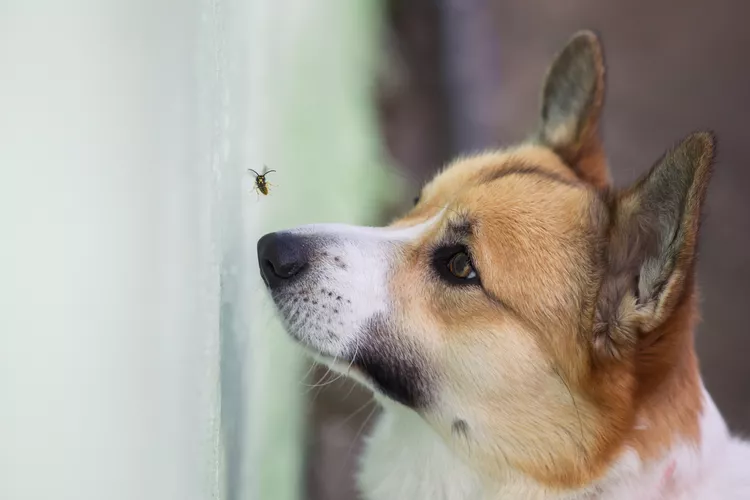What to Do If Your Dog Has Hives

Hives, also known as wheals, are bumps that suddenly appear on your dog's skin. They may be accompanied by redness of the skin, facial swelling, and itching, and often mean your dog has been exposed to an allergen. Understanding what causes hives and how they are treated can be helpful for any dog owner to know.
Causes of Hives in Dogs
While hives can occasionally occur due to estrus, cold sensitivity, or intestinal parasites, they are typically caused by allergens that are are inhaled, ingested, or injected in some way. These allergens cause the body to release histamine. The histamine then causes the body to widen its blood vessels and fluid leaks out of these vessels. This results in swelling in the form of hives. Things that most commonly cause hives in dogs include:
Insect Bites or Stings
Bee stings, ant bites, and other insect trauma often results in an allergic reaction in dogs. Hives commonly appear on the body after a bite or sting but breathing difficulties may also occur.
Plants
Dogs can be allergic to various type of plant matter, either when ingested or contacted directly. Stinging nettles can be a particular problem in hunting dogs.
Chemicals and Pesticides
Various chemicals can sometimes cause hives if they are ingested, inhaled, or come into contact with your dog's skin. These chemicals may be household items like cleaning supplies or even substances like flea preventatives that are designed for dogs. However, if your dog is allergic to it, hives can appear.
Medications or Supplements
Topical, injectable, and oral medications can cause hives if your dog is allergic to them. Just like in people, these hives may suddenly appear after a medicated shampoo is used or a pill is taken if they have an allergy to the drug or supplement in the product.
Environmental Allergens
Pollen, dust, mold, and other allergens found in the environment can cause hives. These are typically inhaled and can cause the small wheals that we commonly refer to as hives.
Diagnosing Hives
Hives are not the same as individual tumors that may develop under your dog's skin. Hives are never solo lumps but are instead always found in groups. They appear suddenly and are small bumps. Hives may be hard to find on dogs with thick hair coats but are easier to see on the face and belly where there is typically less fur. If your dog suddenly has multiple small lumps on its body that weren't there earlier in the day, they are likely hives.
Treatment
Some hives go away nearly as quickly as they appeared so treatment is not always necessary, but you can buy some over-the-counter allergy medicines made for dogs. Sometimes just waiting a few hours is all your dog needs to have its hives resolve, but you should contact your veterinarian if the hives persist or reoccur. See a veterinarian immediately if the hives are accompanied by other symptoms like facial swelling, vomiting, diarrhea, pale gums, collapse, or weakness. Medications like antihistamines and steroids may be necessary to reduce the swelling, inflammation, and histamine release. Discovering the cause of the persistent or reoccurring hives is also necessary in order to remove it from your dog's environment.
How to Prevent Hives
If you know your dog is allergic to something, keeping your dog away from those allergens is the best way to prevent hives. This may mean avoiding using certain chemicals, shampoos, or medications, spraying in and around your home for ants and spiders, and ensuring the plants your dog has access to are not toxic to them. Unfortunately, you don't typically know what your dog is allergic to until they are exposed, but if your dog has had hives once, finding out what caused them can help you prevent your dog from getting hives again.
Hives vs. Other Skin Bumps
Dogs can develop many different types skin lumps or bumps that can look similar to hives. It is important to remember that these are different things though. Skin lumps and bumps will not appear or disappear as quickly as hives can and are usually not found in groupings. As previously mentioned, dogs do not get just one hive, but lumps often appear by themselves. If you have any concerns about a lesion on your dog's skin, have it checked out by your veterinarian.